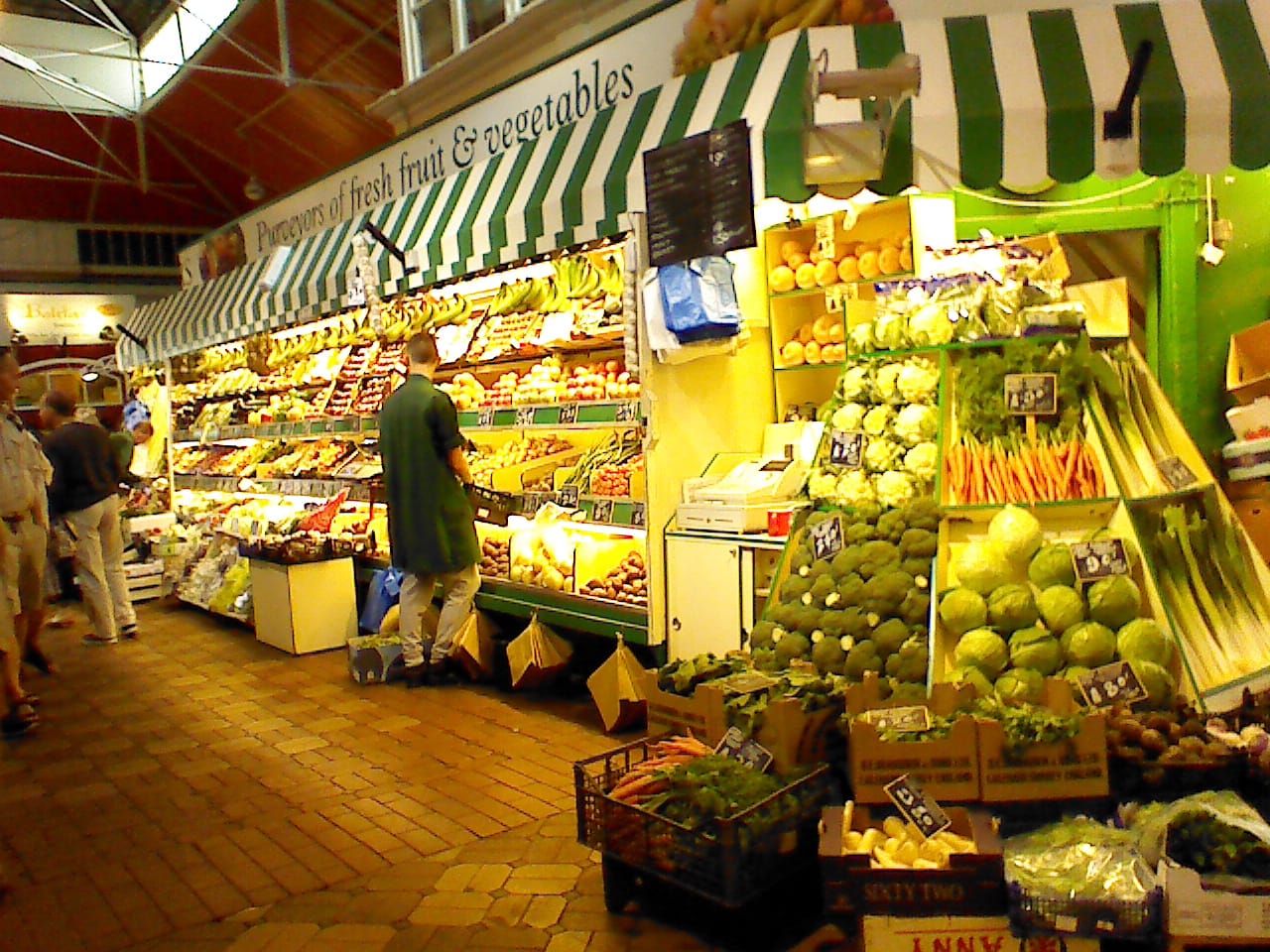Markets in Oxfordshire

This is a county of market towns. There’s a market somewhere in Oxfordshire every single day of the week.
Britain’s market culture has been enduring a long, slow decline (unlike in France). The advent of farmers’ markets in the late 1990s perhaps led to a minor renaissance, but for many people, the weekly market is no longer part of their shopping routine. In this long read we celebrate Oxfordshire’s market heritage, and we’ve also assembled a directory of the county’s markets – mainly because we were frustrated we couldn't find one already.
Market history
In a rural county like Oxfordshire, market towns were centres of both commercial and social life. Indeed, the very name of the town Chipping Norton is derived from the Old English word ‘ceapen’ which means ‘market’.
As traditional market towns developed, they featured a wide main street or central market square where people would set up stalls and booths on market days. A market cross in the centre of the town sought God's blessing on the trade. The base of Eynsham’s market cross still remains, but sadly Banbury Cross is not one: it was erected to commemorate the wedding of Queen Victoria's eldest daughter.
Abingdon, Banbury, Witney, Thame, Faringdon, Wallingford: if it has a Market Place on the map, chances are once upon a time it had a Charter Market. From the 12th century, Royal Charters were issued giving permission for a market or fair at a given location, day and duration. Charters would not be issued for a new market within a certain distance of an existing one – usually around six miles, giving enough market traders time to travel there, sell their goods, and travel back.
Around Oxfordshire
The first reference to a market in Banbury is the Bishop of Lincoln in 1138 dealing with market tolls. Banbury not only had a Charter Market, but also a cattle market until it controversially closed in 1998 (for a history of Banbury's markets, see this excellent article). Banbury also used to have a specialist Horse Fair: there is still a road that bears this name.
Banbury's current market is situated outside the imposing former Corn Exchange building. Thame still has a cattle market (brb, just going to buy a vintage Land Rover and some goats). Bampton had a horse fair too; today it doesn't even have a visiting farmers’ market. Abingdon Charter Market has been running since the 13th century, Henley since the 13th century.
Bicester has long had a market. We unearthed this rather bucolic description of it in the 18oos:
I have heard many of the aged inhabitants say that they have formerly seen the whole market-hill covered with sacks of corn etc; the avenues leading to it crowded by the farmers' wives with their baskets of butter, eggs and poultry
[J. Dunkin, The History and Antiquities of Bicester, A Market Town in Oxfordshire: London, 1816]
Oxford’s markets
By contrast, Oxford's much vaunted Covered Market has only been running since 1774 – 250 years ago this year.
It was opened to regularise the many street traders that were clogging up areas of the city centre. There is evidence of Oxford’s past as a location for markets all over the place… if you know where to look.
Cornmarket Street, for example. The city once had a specialist corn market. In time this became a ‘sample market’ to which farmers brought only purses filled with corn, selling entire crops on the strength of these examples. This history is hiding in plain sight right next to the current Covered Market.
Access to London by the Thames, and from 1790 to the West Midlands by canal, gave Oxford an additional role in distributing corn and corn products. Gloucester Green was a cattle market from 1835 to 1932, before that moved to Oxpens Road (again, “ox pens”) to make way for the country bus station.
A description of Oxford’s Covered Market published in 1790 recounts that it was divided into 48 shops – 40 for butchers and 8 for gardeners – plus 40 stalls for vendors of eggs, bacon, cheese, poultry and other produce. (The Universal British Directory of Trade, Commerce and Manufacture: London, 1790.) A century later, it had no fewer than 156 units. (Read more on oxfordhistory.org.uk.)
Markets today
Our towns are inextricably linked with their market past. But many of us don’t visit a weekly market now. The convenience of click-and-collect or online delivery is a lure for many, or simply the ease of getting everything under one roof.
While only a handful of towns have retained their original charter market, others have enjoyed a renaissance with the advent of farmers’ markets or community markets – a chance to treat yourself with organic or artisan produce. For example, if you're looking to buy large quantities for batch cooking, or simply want a value offering, Banbury's Thursday and Saturday charter markets offer incredible value produce, plants, bread, cards and of course, Banbury cakes (though not Banbury cheese). Contrast nearby Deddington’s Farmers’ Market, where you're more likely to see higher end artisan producers. There's a market for everyone, somewhere.
The Oxfordshire foodie scene is thriving. Blogs like the excellent Ox In A Box provide news of the latest openings. Much of that produce is local and can be found at a market near you. To whet your appetite, here are a few of the providers we regularly see at farmers’ markets around the county:
- Sandy Lane Farm: Organic fruit, veg, eggs from a farm near Thame.
- Styan Family Produce: Premium organic produce from near Evesham.
- North Aston Farms: Organic dairy, beef, lamb and rose veal from North Aston.
- Willowbrook Farm: Halal standard free range chicken, lamb, beef, eggs & local honey, from near Kidlington.
- The Natural Bread Company: Famous for their sourdoughs, you might also find croissants, danishes and scones, made in their Botley bakery.
- Bibury Trout Farm: Rainbow trout fillets, fish cakes, quiches, pies and pate from Bibury.
- Old Friends Fungi Farm: Mushrooms from Oxford.
Add a raft of smaller producers and kitchen table outlets plus local charities – literally the butcher, the baker and the candlestick maker. Markets like Headington Market and East Oxford Farmers & Community Market send out a weekly email detailing the stalls in place each week, to tempt you along.
So, here’s the challenge. We love a market, whether it's bulk produce to batch cook or a weekend treat. And we've created the best listing we possibly can. But even we haven't visited every market in Oxfordshire. Regular readers will know that we are all the Clarion. So if you believe in local produce and local markets, help us make that listing better and we'll update it. Send us a couple of lines on what makes your local market great, and the type of stalls that are there. We’ll update the listing, hopefully to live on Google forever and help local markets, local producers, and, of course, local people find the good stuff. Sound like a plan? Our inbox is at news@oxfordclarion.uk.
Head across to the directory:


